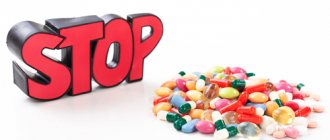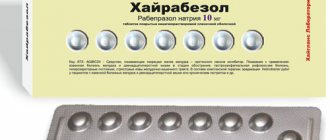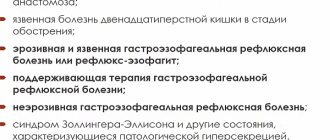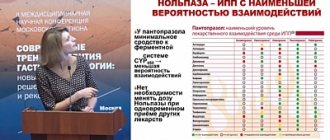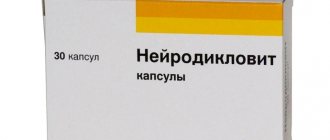The drug Trental, which improves blood circulation, is produced in the form of tablets and a concentrated solution for infusion. The cost of the medicine depends on the form of the medicine and packaging. You can buy Trental at a price of 100-300 rubles per package.
The active substance in pentoxifylline is a xanatine derivative. The component is contained in the following quantities:
- 100 mg, 400 mg in soluble film-coated tablets.
- 20 mg in one ml solution for infusion.
In order to exclude possible allergic reactions when taking the product, it is necessary to pay attention to the auxiliary components that were used to create the drug. Trental instructions also contain all recommendations for use and focus on contraindications.
Composition and release form
Trental® Enteric film-coated tablets - 1 tablet. pentoxifylline - 100 mg excipients: lactose; starch; talc; colloidal silicon dioxide; magnesium stearate shell: methacrylic acid copolymer; sodium hydroxide; macrogol (polyethylene glycol) 8000, talc; titanium dioxide (E171) in a blister 10 pcs; There are 6 blisters in a cardboard pack. Concentrate for the preparation of solution for infusion - 1 ml pentoxifylline - 20 mg excipients: sodium chloride; water for injection in ampoules of 5 ml; There are 5 ampoules in a cardboard pack. Trental® 400 Extended-release film-coated tablets - 1 tablet. pentoxifylline - 400 mg excipients: povidone (PVP); hyaetellose (hydroxyethylcellulose); talc; magnesium stearate shell composition: hypromellose (hydroxypropyl methylcellulose); benzyl alcohol; titanium dioxide; talc; macrogol (polyethylene glycol) 6000; 10 pcs in blister; There are 2 blisters in a cardboard pack.
Use of the drug Trental
The dose of Trental for intravenous infusion is 100-600 mg (in 250-500 ml of Ringer's lactate solution, infusion solution or 5% glucose solution) 1 or 2 times a day. The duration of the IV infusion is from 60 to 360 minutes, that is, the administration of 100 mg of pentoxifylline should last at least 60 minutes. The infusion can be supplemented with oral administration of Trental. If the patient's condition is severe (constant pain, gangrene, trophic ulcers), it is possible to administer an IV infusion of Trental for 24 hours. The dose is administered at the rate of 0.6 mg/kg/hour. The daily dose for a patient weighing 70 kg is 1000 mg, for a patient weighing 80 kg - 1150 mg. Regardless of body weight, the maximum daily dose is 1200 mg. The volume of the administered solution is calculated individually, taking into account concomitant diseases and the patient’s condition and averages 1.0 - 1.5 l/day. The dose of Trental for intravenous injection is 100 mg. Administration is carried out slowly (over at least 5 minutes) 1–2 times a day. The patient must be in a lying position. Orally Trental is prescribed in the following dose: 2-4 tablets 2-3 times a day after meals, without chewing, with a sufficient amount of liquid. The maximum total daily dose for parenteral and oral administration is 1.2 g.
pharmachologic effect
Trental is a drug with a blood-thinning effect, which is used to improve blood circulation in atherosclerosis and diabetes mellitus
Pharmacokinetics
Tablets 100, 400 mg After oral administration, pentoxifylline is quickly and almost completely absorbed. After almost complete absorption, pentoxifylline is metabolized. The absolute bioavailability of the original substance is (19±13)%. The main active metabolite 1-(5-hydroxyhexyl)-3,7-dimethylxanthine (metabolite-1) has a plasma concentration that is 2 times higher than the initial concentration of pentoxifylline. T1/2 of pentoxifylline after oral administration is 1.6 hours. Pentoxifylline is completely metabolized, more than 90% is excreted through the kidneys in the form of unconjugated water-soluble metabolites. The elimination of metabolites is delayed in patients with impaired renal function. In patients with impaired liver function, T1/2 of pentoxifylline is prolonged and absolute bioavailability increases.
Solution for infusion Pentoxifylline is extensively metabolized in red blood cells and the liver. Among the most well-known metabolites, metabolite-1 (M-1; hydroxypentoxifylline) is formed due to cleavage, and metabolite-4 (M-IV) and metabolite-5 (MV; carboxypentoxifylline) are formed due to oxidation of the main substance. M-l has the same pharmacological activity as pentoxifylline. More than 90% of the taken dose of pentoxifylline is excreted through the kidneys and 3-4% in the feces. T1/2 of pentoxifylline after intravenous administration of 100 mg was approximately 1.1 hours. In patients with severe liver dysfunction, T1/2 of pentoxifylline increases. Pentoxifylline has a large volume of distribution (168 L after 30 minutes of infusion of 200 mg) and a high clearance of approximately 4500-5100 ml/min. Pentoxifylline and its metabolites do not bind to plasma proteins. In severe renal impairment, the elimination of metabolites is slowed down.
Pharmacodynamics
Trental® improves the rheological properties of blood (fluidity) by affecting the pathologically altered deformability of red blood cells, inhibiting platelet aggregation and reducing high blood viscosity. Trental® improves microcirculation in areas of poor circulation. As an active ingredient, Trental® contains a xanthine derivative - pentoxifylline. The mechanism of its action is associated with the inhibition of phosphodiesterase and the accumulation of cAMP in the cells of vascular smooth muscles and blood cells. Providing a weak myotropic vasodilator effect, pentoxifylline slightly reduces peripheral vascular resistance and slightly dilates the coronary vessels. Treatment with Trental® leads to improvement of symptoms in cases of cerebrovascular accident. The success of treatment for occlusive lesions of the peripheral arteries (for example, intermittent claudication) is manifested in lengthening the walking distance, eliminating night cramps in the calf muscles and the disappearance of pain at rest.
Indications for use of the drug Trental
Atherosclerotic encephalopathy, ischemic stroke, dyscirculatory encephalopathy, peripheral circulatory disorders caused by atherosclerosis, diabetes mellitus, inflammation; trophic tissue disorders caused by damage to arteries or veins, microcirculation disorders (postthrombophlebitic syndrome, trophic ulcers, gangrene, frostbite); obliterating endarteritis; angioneuropathy (Raynaud's disease, paresthesia); circulatory disorders of the eye (acute, subacute and chronic circulatory failure in the retina and choroid); dysfunction of the inner ear of a vascular nature, accompanied by hearing loss.
Drug interactions
For all dosage forms, Pentoxifylline can enhance the effect of drugs that lower blood pressure (ACE inhibitors, nitrates). Pentoxifylline may enhance the effect of drugs that affect the blood coagulation system (indirect and direct anticoagulants, thrombolytics), antibiotics (including cephalosporins). Cimetidine increases the plasma concentration of pentoxifylline (risk of side effects). Co-administration with other xanthines may lead to excessive nervous stimulation. The hypoglycemic effect of insulin or oral antidiabetic agents may be enhanced when taking pentoxifylline (increased risk of hypoglycemia). Strict monitoring of such patients is necessary. In some patients, concomitant use of pentoxifylline and theophylline may result in increased theophylline levels. This may result in more or worse theophylline-related side effects.
Special instructions for the use of the drug Trental
The drug is prescribed with caution to patients with severe atherosclerosis of the cerebral and coronary vessels, especially with concomitant hypertension (arterial hypertension), heart rhythm disturbances, angina attacks, as well as patients with arterial hypotension or labile blood pressure. In these cases, the dose of the drug should be increased gradually, especially when administered parenterally. Caution is also required when prescribing the drug to patients with a history of peptic ulcers of the stomach and duodenum; patients who have recently undergone surgery. In these cases, the risk of bleeding is increased, so systematic monitoring of hemoglobin and hematocrit levels is necessary. Before prescribing Trental, patients with chronic heart failure should achieve circulatory compensation. For patients with labile or low blood pressure, patients at risk (severe coronary artery disease or severe stenosis of the main vessels of the brain), treatment should begin with the drug in low doses, select doses individually and increase them gradually, taking into account the tolerability of treatment. In patients with diabetes mellitus receiving insulin therapy or treatment with oral hypoglycemic agents, when using Trental in a high dose, the effect of these drugs on blood glucose levels may be enhanced. In these cases, the dose of insulin or oral hypoglycemic agents should be reduced and regular clinical monitoring should be carried out. If renal function is impaired (creatinine clearance 30 ml/min), the dose of the drug is selected individually, reducing it by approximately 30–50%. In case of severe liver failure, the dose of Trental should also be reduced depending on individual tolerability of the drug.
Overdose
Tablets 100, 400 mg Symptoms: dizziness, retching, drop in blood pressure, tachycardia, arrhythmia, redness of the skin, loss of consciousness, chills, areflexia, tonic-clonic convulsions. Solution for infusion Symptoms: weakness, sweating, nausea, cyanosis, dizziness, decreased blood pressure, tachycardia, fainting, drowsiness or agitation, arrhythmia, hyperthermia, areflexia, loss of consciousness, tonic-clonic convulsions, signs of gastrointestinal bleeding (caffeine-type vomiting grounds). Treatment: symptomatic, special attention should be paid to maintaining blood pressure and respiratory function. Convulsive seizures are relieved by the administration of diazepam. When the first signs of overdose appear (excessive sweating, nausea, cyanosis), immediately stop taking the drug. Provides a lower position for the head and upper body. Monitor the free patency of the airways.
Side effects of the drug Trental
Nausea, vomiting, heaviness in the epigastric region, diarrhea, headache, dizziness, aseptic meningitis (when taken in high doses), anxiety, sleep disturbances, facial flushing, flushing, tachycardia, angina pectoris, arterial hypotension, skin itching, rash, urticaria, angioedema, extremely rarely - anaphylactic shock. Very rarely, mainly when used simultaneously with anticoagulants or antiplatelet agents, bleeding (capillary from the skin and mucous membranes, gastrointestinal). The cause-and-effect relationship of bleeding with taking Trental has not been proven. In isolated cases, thrombocytopenia was observed.
Effects of the drug and indications
The drug trental, the instructions for use indicate, reduces blood viscosity and improves its fluidity. The active substance has a slight myotropic vasodilator effect. Such combinations of properties help, after taking the drug, to improve microcirculation in areas where circulatory disorders are observed. The active substance in the medicine is quickly absorbed into the gastrointestinal tract, which guarantees a quick effect. When smoking, the therapeutic effect of the drug is significantly reduced.
Trental tablets are indicated for use in cases of impaired peripheral circulation due to the development of atherosclerosis. Its effectiveness has been proven in a pathology known as “intermittent” claudication. This insidious pathology can immobilize a person at any time. Its main symptom is acute pain in the legs, caused by deterioration of blood circulation in the arteries and their narrowing.
Trental 100 is also prescribed, the instructions confirm this, for trophic disorders. The medicine alleviates the condition of patients with trophic ulcers, which often occur against the background of varicose veins and thrombophlebitis. The drug is indicated in the complex treatment of gangrene and frostbite.
It is recommended to use trental for cerebrovascular accidents. This pathology can be provoked by cerebral atherosclerosis. Symptoms of the disease are the following:
- Inability to concentrate.
- The occurrence of periodic dizziness.
- Problems remembering simple information.
Ischemic and post-stroke conditions are also indications for the drug. When using the drug, it is possible to improve the condition of patients against the background of rapid restoration of blood flow. Indications are degenerative changes in pathologies of the vessels of the inner ear, which lead to hearing loss.
